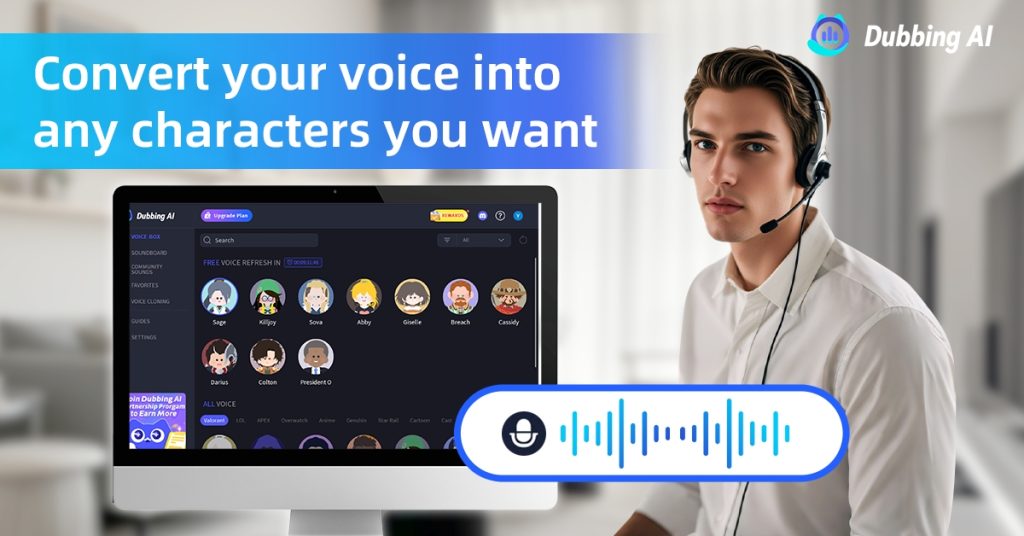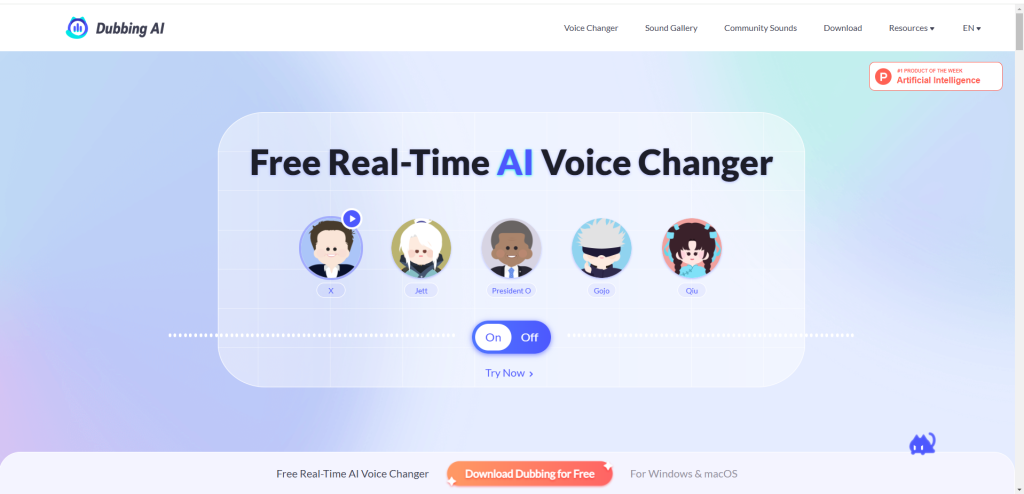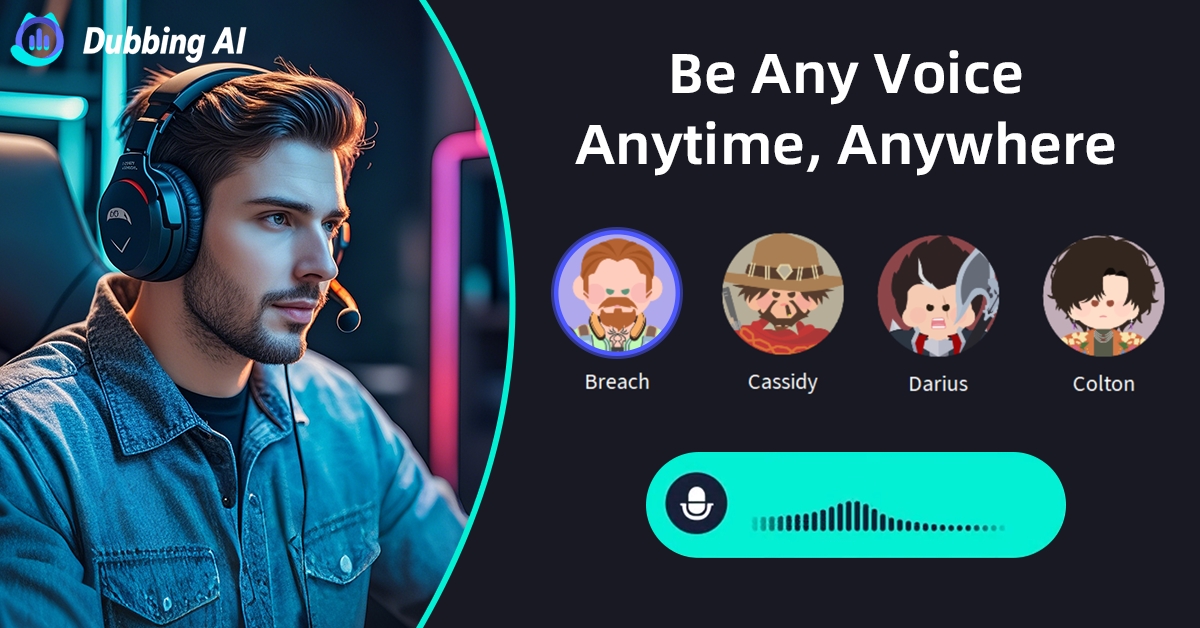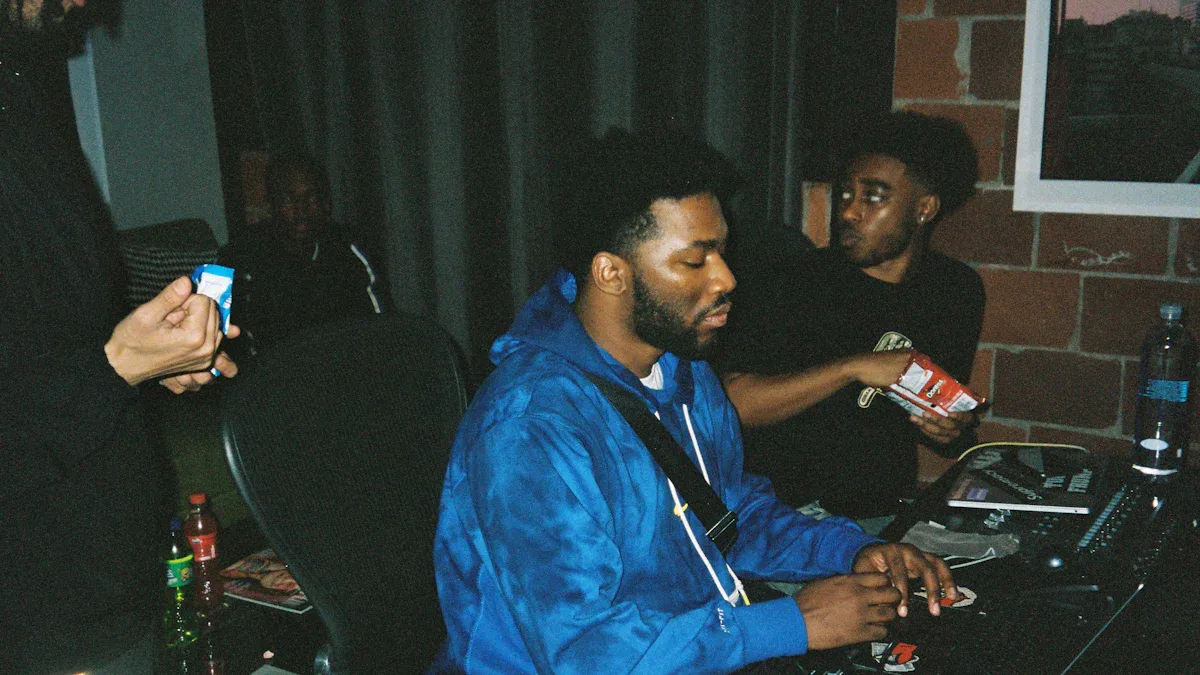Real-time voice transformation faces several challenges that impact modern communication. These include the complexity of implementation, especially for businesses without technical expertise, and the need to ensure voice data security. As the rising demands for dubbing grow, these obstacles can hinder the ability to instantly dub or adapt content for diverse audiences.
Dubbing AI offers a revolutionary solution to these issues, as highlighted in various dubbing AI reviews. It allows you to instantly dub entire podcasts or live sessions with advanced AI video dubbing capabilities. By combining speech recognition, machine translation, and text-to-speech technology, it replicates speech nuances while maintaining timing and syncing. This eliminates the need for extensive recording sessions with a voice actor, making it a scalable and cost-effective option for multilingual content demands.
Key Takeaways
- Dubbing AI changes voices quickly and saves money compared to old ways.
- Smart tools help dubbed voices match the original speech perfectly.
- AI keeps emotions in voices, making content fun and easy to connect with.
- It adjusts for culture, making content fit different groups better than just translating.
- AI dubbing works on big projects fast, helping share content widely.
Key Challenges in Real-Time Voice Transformation
Synchronization Issues
Synchronization difficulties often arise when transforming voices in real time. You may notice delays between the original speech and the transformed output, which can disrupt the flow of communication. This issue becomes more pronounced in live settings, such as streaming or virtual meetings, where timing is critical. Achieving perfect synchronization requires advanced algorithms that can process audio data instantly. Without this precision, the dubbed content may feel disjointed, reducing its effectiveness.
Emotional Authenticity
Capturing the emotional tone of a speaker presents another significant challenge. When you listen to dubbed content, you expect the voice to convey the same emotions as the original speaker. However, many systems struggle to replicate subtle nuances like joy, anger, or sadness. This lack of emotional authenticity can make the transformed voice sound robotic or detached. For example, in storytelling or entertainment, failing to preserve emotions can break the audience’s immersion.
Cultural Adaptation
Localization goes beyond translating words; it involves adapting content to fit cultural norms and expectations. You might find that a joke or idiom in one language doesn’t resonate in another. Real-time dubbing must account for these differences to ensure the message remains relevant and engaging. This requires not only linguistic expertise but also cultural sensitivity. Without proper localization, the dubbed content risks alienating its target audience.
Cost and Scalability
Cost and scalability often become significant hurdles when implementing real-time voice transformation. Traditional dubbing methods require hiring voice actors, renting studio time, and conducting multiple recording sessions. These processes not only increase expenses but also consume valuable time. For businesses or creators managing multilingual content, the costs can quickly spiral out of control. Scaling these efforts to meet growing demands adds another layer of complexity.
You might wonder how to overcome these challenges without compromising quality. This is where Dubbing AI excels. By automating the dubbing process, it eliminates the need for expensive studio setups or professional voice actors. The AI-powered system uses advanced algorithms to generate high-quality voice transformations in real time. This approach significantly reduces production costs, making it an affordable option for individuals and businesses alike.
Scalability becomes seamless with Dubbing AI. Whether you need to dub a single video or an entire library of content, the platform handles the workload efficiently. Its ability to process large volumes of data ensures that you can meet tight deadlines without sacrificing quality. For example, content creators can use Dubbing AI to localize their videos for multiple languages simultaneously, reaching a broader audience with minimal effort.
Additionally, the platform’s compatibility with various devices and software ensures accessibility for users across different industries. Whether you’re a gamer, educator, or marketer, Dubbing AI adapts to your needs. This flexibility allows you to scale your projects without worrying about technical limitations or budget constraints.
By addressing both cost and scalability, Dubbing AI empowers you to focus on creating impactful content while saving time and resources.
How AI-Powered Dubbing Addresses These Challenges

Advanced Synchronization Tools
Timing is everything in real-time dubbing. AI-powered dubbing uses advanced synchronization tools to ensure your voice transformations align perfectly with the original speech. These tools include:
- Automated frame matching, which identifies sync issues in lengthy content in under a minute.
- High-precision detection with a 99.4% F1 score accuracy, reducing the need for manual adjustments.
- Built-in quality checks that detect errors early, streamlining the dubbing process and minimizing mistakes.
These features allow you to maintain seamless communication, whether you’re dubbing live streams or pre-recorded videos. By automating synchronization, the technology ensures your voice output feels natural and immersive, enhancing the overall quality of your content.
Emotional Tone Preservation
AI dubbing excels at preserving the emotional tone of your voice. It analyzes the original audio to detect subtle nuances like joy, sadness, or excitement. Then, it replicates these emotions in the transformed voice with accurate modulation and intonation. This ensures your audience experiences the same emotional impact as the original content.
For example, storytelling becomes more engaging when the dubbed voice conveys the right emotions. Whether you’re narrating a heartfelt scene or delivering a motivational speech, the AI ensures your voice resonates with your audience. This emotional authenticity sets AI-powered dubbing apart from traditional methods, which often struggle to replicate such subtleties.
Cultural and Linguistic Adaptation
- Adapting content for multiple languages requires more than just translation. AI-powered dubbing emphasizes cultural relevance to ensure your message connects with diverse audiences. It achieves this by:
- Prioritizing adaptation over direct translation to preserve the original intent and emotional impact.
- Incorporating feedback from linguistic experts and cultural consultants to refine the dubbing process.
- Customizing accents and maintaining consistent brand voices across languages for better cultural alignment.
This approach ensures your content remains clear, engaging, and culturally appropriate, no matter where your audience is located. By addressing both linguistic and cultural nuances, AI-powered dubbing helps you build stronger connections with global audiences.
Cost-Effective and Scalable Solutions
AI-powered dubbing offers a game-changing approach to voice transformation by significantly reducing costs and enhancing scalability. Traditional dubbing methods often require hiring multiple voice actors, renting studio space, and conducting lengthy recording sessions. These processes can quickly inflate your budget and delay project timelines. AI dubbing eliminates these hurdles by automating the entire process, saving you both time and money.
Scalability is another key advantage of AI-powered dubbing. Whether you’re a small content creator or a large corporation, the technology adapts to your needs. You can localize vast amounts of content for multiple languages simultaneously, making it easier to expand your global reach. For example:
- AI solutions allow you to create multilingual versions of your content in parallel.
- Automated systems operate 24/7, enabling continuous production across time zones.
- High-volume demands are met without compromising quality, ensuring consistent results.
Large-scale businesses benefit immensely from this scalability. If your organization manages extensive content libraries, AI dubbing can handle the workload efficiently. This capability ensures you meet tight deadlines while maintaining high standards. Additionally, the global accessibility of AI-powered solutions helps you connect with diverse audiences by adapting content to various languages and cultures.
By leveraging AI dubbing, you can achieve cost-effective and scalable voice transformation. This approach not only saves resources but also empowers you to focus on creating impactful content for a broader audience.
Benefits of AI Dubbing

Faster Turnaround Times
AI dubbing revolutionizes how quickly you can complete voice transformation projects. By automating transcription, translation, and voice work, it significantly reduces production time. This makes it ideal for time-sensitive content like news broadcasts or live events.
- You can save costs by eliminating the need for voice actors and studio rentals.
- Rapid project completion allows you to meet tight deadlines without compromising quality.
- AI dubbing ensures consistent results across multiple languages, enhancing global reach and engagement.
Enhanced Quality and Consistency
AI dubbing ensures a high-quality dub by maintaining a consistent tone, pace, and style across all passages. Modern AI systems excel at reproducing the subtleties of human speech, such as tonality and emotion. This results in natural-sounding voices that resonate with your audience.
- You can achieve a natural-sounding dub that feels authentic and immersive.
- AI-generated voices deliver a quality dub that matches the original content’s emotional depth.
This consistency makes AI dubbing a reliable choice for projects requiring precision and professionalism.
Accessibility and Inclusivity
AI dubbing plays a vital role in breaking down language barriers and improving accessibility. By enabling multilingual content creation, it ensures your message reaches diverse audiences worldwide.
- Global scalability allows you to expand into international markets effortlessly.
- Non-English speakers gain access to your content through accurate and natural-sounding dubs.
- Individuals with hearing impairments benefit from inclusive features like subtitles and voiceovers.
Real-World Applications of Dubbing and Localization
Entertainment and Media
AI-powered video dubbing has revolutionized the entertainment and media industry. You can now enjoy movies, TV shows, and online videos in multiple languages without losing the original speaker’s voice characteristics. This technology uses artificial intelligence to translate and replace audio tracks while preserving emotional depth and intonation. It ensures that multilingual content feels authentic and relatable to diverse audiences.
The speed and flexibility of AI dubbing make it a game-changer for global content distribution. Traditional methods required extensive time and resources from voice actors and sound engineers. AI eliminates these delays, allowing you to access dubbed content faster. For example, in 2024, AI will increasingly be used for dubbing movies and series. Synthesized voices are becoming more expressive, enabling a single AI model to convey a wide range of emotions and intonations. This advancement ensures that video dubbing meets the high standards of modern audiences.
Education and E-Learning
AI dubbing enhances accessibility and engagement in education and e-learning. It converts written content into spoken words, making learning materials more inclusive for individuals with disabilities. You can also benefit from closed captions and native speaker voiceovers, which improve comprehension and personalization.
E-learning platforms use AI to create consistent voiceovers for training modules, saving time and costs. Multinational corporations rely on this technology to produce multilingual training videos quickly, ensuring inclusivity for employees worldwide. By providing relatable and expressive narration, AI-powered video dubbing makes educational content more engaging and effective for learners of all ages.
Corporate and Marketing
In corporate and marketing sectors, AI dubbing helps you adapt content for various languages and regions. This allows businesses to expand their reach and connect with diverse audiences. AI-powered tools enable companies to scale localization efforts by generating multilingual versions of content simultaneously.
You can also tailor voices to regional accents or user preferences, adding a personal touch to your campaigns. AI ensures uniformity in voices across episodes, seasons, or branding materials, which is crucial for maintaining consistency. Additionally, AI dubbing operates around the clock, producing localized content faster and keeping businesses competitive in a global market.
Conclusion
Dubbing AI effectively tackles real-time voice transformation challenges by automating complex processes like synchronization, emotional tone preservation, and cultural adaptation. Its advanced AI tools ensure consistent voice quality and performance across projects, making it a reliable choice for multilingual content creation.
You can benefit from its cost savings, as AI dubbing averages $0.5 per minute compared to $50–$300 for traditional methods. It also offers scalability, enabling rapid localization for global markets. Features like personalization, faster turnaround times, and seamless integration with existing workflows enhance efficiency and engagement.
By adopting Dubbing AI, you can expand your reach, break language barriers, and deliver high-quality content to diverse audiences. Explore the possibilities today and join the growing community of users who trust Dubbing AI for their voice transformation needs.






